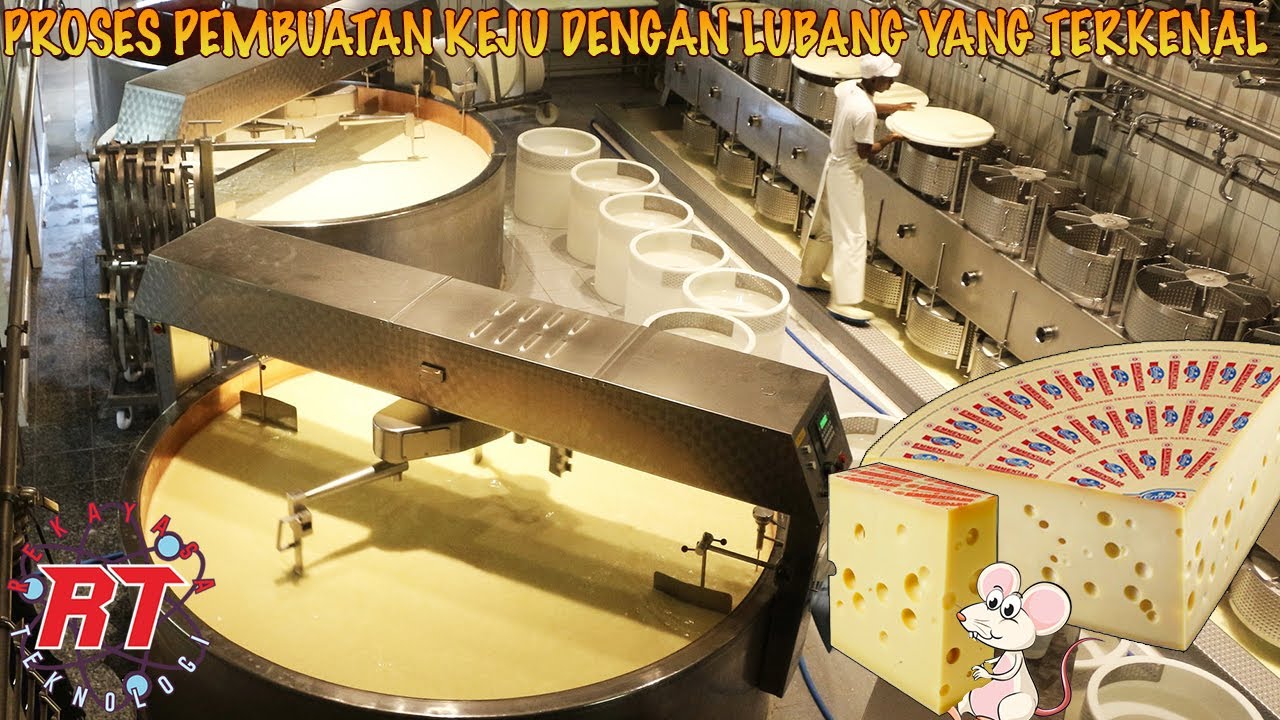How Is Cheese Made?
Summary
TLDRThis video takes viewers on a fascinating journey through the intricate process of cheese-making, from milk collection to the final aging process. It explains how different types of milk and bacteria influence the taste and texture of cheese, the critical role of rennet in coagulation, and how curds are cut, pressed, and salted. The video also highlights the aging process, where flavors develop over time, and the care involved in crafting various cheeses. Whether mass-produced or artisanal, the art of cheese-making combines science and tradition to create a culinary masterpiece.
Takeaways
- 😀 Cheese is a beloved and versatile food enjoyed worldwide, with a variety of flavors, textures, and aromas.
- 😀 The cheese-making process involves science, art, and tradition, turning milk into flavorful cheese through several steps.
- 😀 The foundation of cheese-making is milk, with the type of milk used impacting the taste, texture, and nutritional properties of the final product.
- 😀 Pasteurization is often used in commercial cheese production to kill harmful bacteria, while some artisanal cheeses are made with raw milk for more complex flavors.
- 😀 Starter cultures are beneficial bacteria that ferment lactose into lactic acid, lowering the milk's pH and changing its structure, which is crucial for flavor and texture.
- 😀 Renin, an enzyme that causes coagulation, is added to milk to form curds, either derived from young calves or sourced from fungi and microbial alternatives.
- 😀 Cutting the curds is a key step that determines the texture and moisture content of the cheese, with smaller curds creating firmer cheeses like Parmesan.
- 😀 Cooking the curds involves gentle heating to expel more whey, further firming the curds, which is essential for cheeses that need aging.
- 😀 Salting helps preserve the cheese, enhances flavor, and controls moisture. It can be applied directly to curds, rubbed on the surface, or through a brine bath.
- 😀 Aging is where cheese develops its unique flavors and textures. The process varies in time, temperature, and humidity, with some cheeses requiring years of aging.
Q & A
What is the first step in the cheese-making process?
-The first step in the cheese-making process is the collection of milk, which forms the foundation of all cheese. The type of milk used greatly impacts the final product's taste, texture, and nutritional properties.
Why is pasteurization important in commercial cheese production?
-Pasteurization is important in commercial cheese production because it involves heating the milk to a specific temperature to kill harmful bacteria, ensuring consistency and safety.
How do starter cultures influence the cheese-making process?
-Starter cultures are beneficial bacteria that kickstart the fermentation process. They help convert lactose into lactic acid, which lowers the milk's pH and alters its structure, influencing the cheese's acidity, texture, and flavor.
What role does rennet play in cheese-making?
-Rennet is an enzyme that causes the milk to coagulate, forming curds. It helps bind the proteins in the milk together into a gel-like structure, which is essential for curd formation in cheese-making.
What does the 'clean break test' signify in the cheese-making process?
-The clean break test is performed by inserting a knife into the coagulated milk. If the cut is clean and the curd holds its shape, it indicates that the milk has coagulated properly, and the cheese-maker can proceed to the next step.
Why is cutting the curds an important step in cheese-making?
-Cutting the curds is crucial because it determines the texture and moisture content of the cheese. Smaller curds release more whey, leading to firmer cheeses, while larger curds retain more moisture, producing softer cheeses.
How does the process of cooking the curds affect the final cheese?
-Cooking the curds involves gently heating them to expel more whey and further firm them up. This step is particularly important for cheeses that require aging, as it influences the final texture and moisture content.
What role does salting play in the cheese-making process?
-Salting serves multiple purposes in cheese-making: it enhances flavor, helps preserve the cheese, controls moisture, and inhibits the growth of unwanted bacteria. Salting methods vary, including direct addition to curds, rubbing onto the surface, or immersion in brine.
How does aging contribute to the development of cheese?
-Aging, or maturation, allows cheese to develop its unique flavor, texture, and character through chemical reactions that break down proteins and fats. The aging process is influenced by factors such as temperature, humidity, and time.
What is the significance of introducing mold spores in some cheeses?
-Introducing mold spores in certain cheeses, like Roquefort or Gorgonzola, creates the signature blue veins and imparts bold, distinctive flavors. This specialized aging process is crucial for the development of these types of cheese.
Outlines

Dieser Bereich ist nur für Premium-Benutzer verfügbar. Bitte führen Sie ein Upgrade durch, um auf diesen Abschnitt zuzugreifen.
Upgrade durchführenMindmap

Dieser Bereich ist nur für Premium-Benutzer verfügbar. Bitte führen Sie ein Upgrade durch, um auf diesen Abschnitt zuzugreifen.
Upgrade durchführenKeywords

Dieser Bereich ist nur für Premium-Benutzer verfügbar. Bitte führen Sie ein Upgrade durch, um auf diesen Abschnitt zuzugreifen.
Upgrade durchführenHighlights

Dieser Bereich ist nur für Premium-Benutzer verfügbar. Bitte führen Sie ein Upgrade durch, um auf diesen Abschnitt zuzugreifen.
Upgrade durchführenTranscripts

Dieser Bereich ist nur für Premium-Benutzer verfügbar. Bitte führen Sie ein Upgrade durch, um auf diesen Abschnitt zuzugreifen.
Upgrade durchführenWeitere ähnliche Videos ansehen

How CHEESE Is Made - Modern Cheese Factory

Kepoin Pabrik Pembuatan Keju Kanada | SI UNYIL (12/05/20)

AMAZING Parmesan Cheese Production: Discover The Largest Parmesan Factory!

How Italian Gorgonzola Cheese Is Made | Regional Eats | Food Insider

How Cheese is Made | The Art of Cheesemaking

PROSES PEMBUATAN KEJU SWISS EMMENTALER YANG TEKENAL DENGAN LUBANG KEJU YANG UNIK
5.0 / 5 (0 votes)
